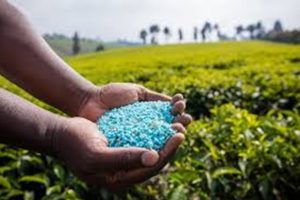BY GETACHEW MINASWhenever the Ethiopian economy registers significant and notable growth, the agricultural sector makes the highest contribution. Of the total produce, crops take a substantial share out of which wheat stands as the most important cereal crop. It makes a significant contribution to the growth and development of the agricultural sector and to the food security of farmers. With substantial government support to farmers, wheat production and productivity have been rising in the last few years.
Despite the wars and civil disorder, Ethiopia has recorded the largest wheat production in sub-Saharan Africa. However, the Western propaganda machine spreads lies related to drought and shortage of food in the country. The West shipped food aid to Ethiopia without being requested. In fact, wheat has been produced by small-scale farmers and by commercial agro-enterprises that use modern techniques of production.
In the past, wheat production and marketing system has been negatively affected by constraints which caused decreasing yield of wheat. However, there were also important opportunities which encouraged wheat production and marketing. Moreover, the attention given to infrastructure, training and awareness given to farmers has helped in boosting wheat production. Ethiopia has been making progress towards the structural transformation of its economy. Such progress has been driven by growth in agricultural productivity that allows the poor farmers to shift from agriculture towards other sectors including local manufacturing, industry and services. The government focuses on transformation that increases the per capita income of farmers thereby reducing and eliminating poverty and hunger.
It is well known that the agriculture sector is the backbone of the Ethiopian economy. It makes a major contribution to the gross domestic product/GDP of the country. Within agriculture, crop production is a major contributor to GDP. Also, livestock rearing is a major subsector of agriculture, which contributes live animals and their produces to the economy. These produces include meat, dairy products, hides and skins, which could be prepared for exports. As foreign exchange earners livestock produces may finance import of manufactured goods, canned food, fertilizers, agricultural machineries and farm implements. It is probably one of the few sectors the outputs of which finance its inputs. In other words, Ethiopia exports, for example, meat to earn foreign exchange with which it imports fertilizers.
According to agricultural experts, coffee, pulses, oilseeds, potatoes, sugarcane, vegetables and cereals are the principal crops grown in Ethiopia. Cereals are the most important food crop which provides daily food calories to the people. Hence, cereal production and marketing are the means of livelihood for millions of Ethiopians. Wheat, maize, teff, sorghum and barley are the major cereals that occupy a large segment of the total area cultivated. Consumers spend a major part of their income for purchasing cereals. Of the total grain produced in Ethiopia, cereals account for a large share of the produce. Wheat is an important industrial and food grain which ranks second among the most important cereal crops in the world after rice and traded internationally.
The Prosperity Party/PP and government of Ethiopia focus on wheat as a strategic commodity which generates farm income and improves food security status. Many African countries are producing wheat for both consumption and sale, but the level of production and sale varied between countries. Ethiopia is one of the largest wheat producers in terms of total wheat area cultivated and total production (CSA). As noted by Anteneh and Dr. Asrat, wheat and wheat products represent a major share of the total calorie intake in the country which makes wheat one of the most important food items. In Ethiopia, wheat ranks fourth after teff, maize and sorghum in area coverage and third after maize and teff in total production (CSA).
Studies indicate that the smallholder production of wheat is mainly for subsistence and less for market. It is produced by both smallholder farmers and large-scale commercial farms. Except some large-scale and commercial farms, wheat is produced predominantly by smallholder farmers under rain fed conditions. This modality of production affects the competitiveness of wheat quality at the global level. Having realized this problem, the current Ethiopian government has embarked on an agricultural strategy that improves wheat production and productivity. This strategy promotes export of wheat after having satisfied domestic consumption. It definitely replaces imports thereby saving foreign exchange and it helps earn foreign exchange by exporting wheat.
It is the intent of the Ethiopian government to encourage wheat production for both the domestic and external markets. It has helped technically in the import of agricultural tools, implements, tractors, combine harvesters as well as training for operators. It also facilitated agricultural investment that contributes to high yield thereby satisfying domestic and external markets. In this endeavor focus has been given to the highlands of the central, south-eastern and northwest parts of the country which are the main wheat-growing zones of Ethiopia. In the country, wheat grain is used in the preparation of different traditional as well as modern processed food products and other industrial processed products like pasta and macaroni. Also, wheat straw is traditionally used as a roofing material and as animal feed.
Wheat is one of the most vital cereal crops, the production and marketing of which should be given policy direction and close attention by the government of Ethiopia. It is an essential stable and cash crop that increases income, food security, employment and agriculture sector GDP. However, studies indicate that its production and marketing is challenged by factors such as shortage of agricultural inputs, infestation of pests and diseases. It is also seriously affected by shortage of infrastructure, institutional services, storage facilities, product quality and low marketing price. However, there are also opportunities such as the policy of the Ethiopian government, expansion of market and increasing demand for wheat. Also, the potential for wheat production encourages producers and traders to engage in its production and marketing activities.
Research has been conducted on wheat in different parts of Ethiopia. The output of such a research work has to be reviewed and documented for reference by policymakers, researchers and others who are interested in wheat. Particularly, a review of value chain analysis would help to identify challenges and opportunities in wheat production, distribution and marketing in the country. Also, analysis of the impact of climate change on wheat production is of great value. Currently, the Ethiopian government is giving proper attention for the facilitation of production and marketing at home and abroad. Wheat serves as an instrument to reduce and eliminate hunger and poverty. Wheat also saves and earns foreign exchange through reducing its imports and enhancing its exports.
Observers have indicated that little has been done in reviewing research works on wheat in the country. It is, therefore, important to review them to identify gaps and give future directions on production, productivity and marketing of wheat. The overall objective of such a review is to assess wheat production and marketing in Ethiopia. It should specifically review wheat production status, marketing constraints and opportunities in the country. Constraints are the main reasons for the low development of the wheat sector in the past. On the other hand, opportunities are a means for increasing production, productivity and marketing of wheat. Wheat production and productivity in Ethiopia is the pillar for the growth of the Ethiopian agriculture. The agricultural sector, in turn, has contributed to the development of the country’s economy.
Sustained growth in wheat production depends on modern technology supported by agricultural extension services. The extension structure extends from the federal to regions and to Woredas where the main drivers are stationed. In the production system, commodities like crops, pulses, oilseeds, vegetables and fruits are produced annually. Crops make the largest contribution to total production and area coverage (CSA). Crop production has the highest share in the Ethiopian gross domestic product. Among the types of crops, cereals are the most important which provides food calories in day-to-day life of the people. To strengthen their life and to change their living standards, people use various livelihood strategies. Thus, cereal, in particular wheat, production and marketing are the backbone of the Ethiopian economy.
According to agriculture experts, there is a significant annual variation in small scale wheat production due to variability in rainfall. When the rainfall is insufficient, it leads to low production. Despite good production and productivity trends, Ethiopia has faced a growing deficit in supply due to increase in demand caused by the high growth rate of population. Even if it shows increasing trend domestically, wheat production by small scale farmers is still relatively small by global standards. To increase the demand of wheat domestically and globally, the current government has given tremendous support to small farmers and large-scale commercial investors. As a result there will be a glut in wheat production, which may be exported in the very near future.
Experts believe that wheat can be produced in almost all regions of the country including pastoral and agro-pastoral areas. Bale and Arsi zones are the main wheat-growing areas and are known as the wheat belt of Ethiopia. However, wheat production and marketing face constraints despite its major share in rural employment, agricultural land use, calorie intake and contribution to national income. Wheat is one of the most important staple crops of the country in terms of production and consumption. However, Ethiopia still imports millions of quintals of wheat annually. There are two main reasons for the import of wheat into the country. The first is to stabilize domestic price and the second is to meet the overgrowing wheat demand of the consumer in the country. The current government of Ethiopia has been making efforts in the last few years to mechanize wheat farming and produce for both the domestic and external markets. Such a strategy encourages both saving and earning of foreign exchange in the country. Such efforts defeat the Western propaganda against Ethiopia as a starving country. They shipped wheat to Ethiopia which has been rejected by the government.
THE ETHIOPIAN HERALD FRIDAY 2 SPTEMBER 2022





